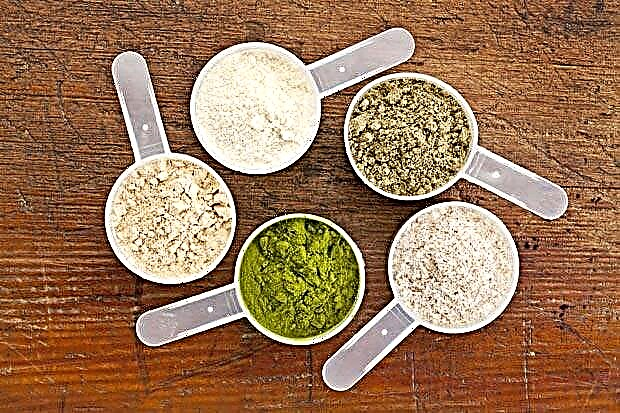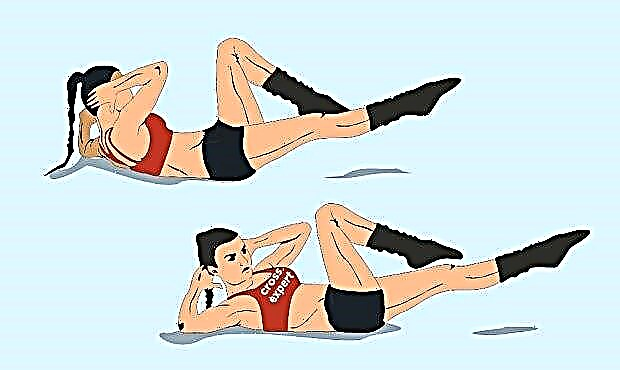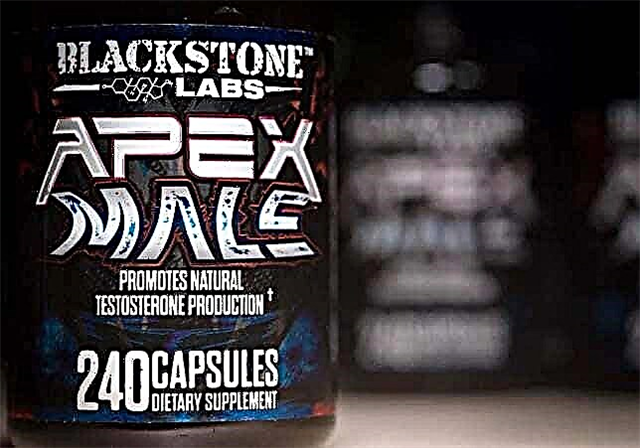Bran is a product that possesses valuable nutritional properties, gives a feeling of fullness for a long time and does not transform into fatty deposits. The most popular types of bran are wheat, oat, rye and corn. Rice, linseed, buckwheat and barley are no less useful. Bran contains a unique set of beneficial components and dietary fiber that improve the functioning of the body as a whole and contribute to weight loss.
What it is
People often hear about the beneficial and medicinal properties of bran, but not everyone knows what it is. Bran is a by-product from the processing of whole grain flour.
Bran is a hard shell (skin) of a grain or grain germ. The hard shell is removed from the grain in the process of refining (grinding) and bleaching, and is almost 100% vegetable fiber.
The grain rind varies in the degree of grinding and can be coarse, in which case the bran is coarse, and fine, then the by-product is called fine.
Bran is practically not absorbed by the human body, and therefore, does not lead to weight gain, but creates a feeling of satiety. Passing through the esophagus, the bran first settles in the stomach and swells, and then passes freely through the intestines, simultaneously removing decay products, toxins and toxins.
Composition, BZHU and calorie content
Depending on the type of bran, the chemical composition, calorie content of the product and the ratio of BZHU change. Bran is a useful product, it must be included in the diet of people who adhere to a healthy and proper diet (PP), as well as athletes because of the rich content of fiber, vitamins and minerals in the composition.
Nutritional value of the most common varieties of bran per 100 g:
| Variety | Dietary fiber, g | Calorie content, kcal | Proteins, g | Carbohydrates, g | Fat, g |
| Oat | 15,3 | 245,6 | 17,4 | 50,6 | 7,1 |
| Rice | 20,9 | 315,8 | 13,3 | 28,6 | 20,7 |
| Linen | – | 250,1 | 30,1 | 9,9 | 10,1 |
| Wheat | 43,5 | 165,5 | 16,1 | 16,7 | 3,8 |
| Rye | 43,5 | 114,3 | 12,3 | 8,6 | 3,4 |
| Corn | 79,1 | 223,6 | 8,3 | 6,7 | 0,9 |
15 g of bran is placed in a tablespoon, therefore, the calorie content of this amount is calculated depending on the type of product.
The ratio of BZHU per 100 grams, respectively:
| Bran | BZHU |
| Corn | 1/0,1/0,9 |
| Rye | 1/0,3/0,7 |
| Wheat | 1/0,2/1 |
| Linen | 1/0,3/0,4 |
| Rice | 1/1,7/2,2 |
| Oat | 1/0,4/2,8 |
Rye, oat, and wheat bran are best suited for dietary nutrition.
The chemical composition of bran per 100 g is presented in the form of a table:
| Name of elements | Oat | Rice | Wheat | Rye | Corn |
| Selenium | 45.2 mcg | 15.6 mcg | 77.5 mg | – | 16.8 mcg |
| Iron | 5.42 mg | 18.55 mg | 14.1 mg | 10,1 mg | 2.8 mg |
| Copper | 0,4 mg | 0.79 mg | 0.99 mg | 0.8 mg | 0.3 mg |
| Manganese | 5.56 mg | 14.3 mg | 11.4 mg | 6.9 mg | 0.14 mg |
| Potassium | 566.1 mg | 1484 mg | 1256 mg | 1206 mg | 44.1 mg |
| Magnesium | 235.1 mg | 782 mg | 447.8 mg | 447.6 mg | 63.5 mg |
| Phosphorus | 734.1 mg | 1676 mg | 951.1 mg | 310.1 mg | 72.1 mg |
| Calcium | 57.8 mg | 56 mg | 151 mg | 229.2 mg | 41.6 mg |
| Sodium | 4.1 mg | 5 mg | 8.1 mg | 61.0 mg | 7.2 mg |
| Thiamine | 1.18 mg | 2.8 mg | 0.76 mg | 0.53 mg | 0.02 mg |
| Choline | 32.1 mg | 32.3 mg | 74.3 mg | – | 18.2 mg |
| Vitamin PP | 0.94 mg | 33.9 mg | 13.6 mg | 2.06 mg | 2.74 mg |
| Vitamin B6 | 0.17 mg | 4.1 mg | 1,3 mg | – | 0.16 mg |
| Vitamin E | 1.01 mg | 4.9 mg | 10.3 mg | 1,6 mg | 0.43 mg |
| Vitamin K | 3.3 μg | 1.8 μg | 1.9 μg | – | 0.32 μg |
In addition, each type of product contains a large amount of fiber, plant fiber, as well as poly- and monounsaturated fatty acids.
The benefits of bran for the body
Vitamins, fiber, as well as micro- and macroelements, which are part of absolutely all bran, are beneficial for the female and male body, namely:
- The systematic use of bran alone or as a food additive, for example, in bread, serves as the prevention of diseases such as chronic colitis and diverticulosis.
- The product lowers the level of "bad" cholesterol in the blood and normalizes blood pressure.
- Bran serves as a preventive measure for the development of atherosclerosis.
- The beneficial properties of bran in diabetes mellitus consist in a positive effect on the breakdown of starch in the blood and the ability to lower the glycemic index of the product.
- You can lose extra pounds if you include bran, for example, rye or wheat, in the diet by reducing hunger.
- Bran boosts metabolism. Fiber by itself does not initiate the process of burning subcutaneous fat, but it directly affects the cause of excess weight, namely, the metabolic process.
- The work of the heart will improve if you take the hard shells of the grains at least a couple of times a week. Excess fluid will be removed from the body and puffiness will come down.
- The product is useful for hypertension, as it has vasodilating properties.
- Bran (any variety: corn, flaxseed, rice, oat, etc.) has a therapeutic effect on the intestines, relieves constipation and removes toxins and toxins from the colon. With systematic use, the product normalizes the digestive tract as a whole.
It is recommended to eat grain shells during the recovery period after a serious illness or surgery, as well as after exhausting sports marathons or competitions.
The most useful bran is milled, rather than granulated, since sugar, salt or flavor enhancers may be added to the latter. A quality product is practically odorless and does not have a pronounced taste.

© Rozmarina - stock.adobe.com
How to take bran when losing weight
It is impossible to eat bran in unlimited quantities, even despite the extensive list of useful properties of the product. It is correct to take a slimming product in the amount of 20-40 grams per day, but no more.
The shells of grains are allowed only in combination with water, otherwise there will be no beneficial effect. It is necessary to take bran (oat, rye, etc.), pour boiling water over, leave for 20-30 minutes. Then drain the excess liquid and only then add to any dishes.
Dietary fiber, which contributes to the slimming process, only works if the product absorbs moisture and increases in volume.
The first intake of dietary bran for an adult should start with 1 teaspoon per day, and only after 2 weeks of intake can the dose be increased to 2 tablespoons per day.
The process of losing weight is accelerated due to the fact that the hard shells of the grains improve the functioning of the intestines, promote the removal of excess fluid from the body and speed up the metabolism. After eating food with bran in the stomach, the feeling of satiety persists for a long time - the bran swells and fill most of the stomach volume.
There are many different diets using the product, but in each of them bran is an auxiliary means, and not the main source of energy and not the only food.

© Olaf Speier - stock.adobe.com
The harm of bran to health and contraindications
Exceeding the daily intake of bran can cause side effects and harm human health. It is contraindicated to use any of the varieties of bran in case of exacerbation of the following diseases:
- gastritis;
- stomach ulcer;
- enteritis.
After the exacerbation has passed, you can return the bran to the diet in the amount of 1 teaspoon. In addition, it is strictly forbidden to eat the product if you are allergic to cereals.
Systematic abuse of the product will lead to an exacerbation of gastrointestinal diseases, flatulence, indigestion, hypovitaminosis.
Increasing the daily intake of bran is possible only on the recommendation of a nutritionist, and it is recommended to do this gradually.

© nolonely - stock.adobe.com
Outcome
Bran is a healthy dietary product that helps you lose weight and keep your body fit after you achieve the desired results. The systematic use of the product will have a positive effect on health, accelerate metabolism and normalize bowel function. Bran is rich in fiber, dietary and plant fibers, vitamins and micro- and macroelements that are necessary for the proper functioning of the body.









